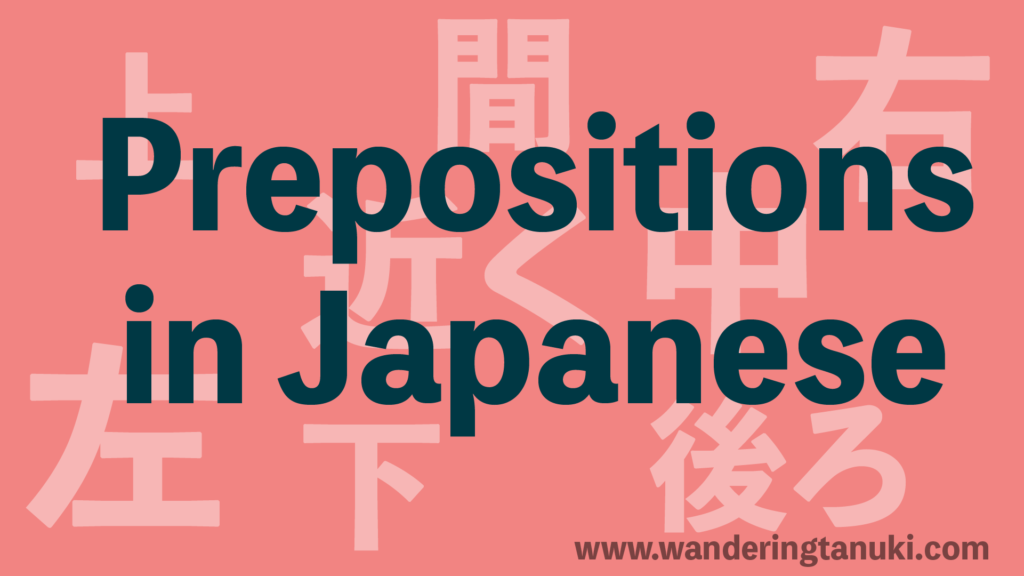Japanese Prepositions: Describe locations!
Note: As an Amazon Associate, I earn from qualifying purchases.
Japanese prepositions are incredibly useful for describing where things are and pointing them out! In a previous article, I went over how to ask for directions in Japanese which you can check out here. This time, I wanted to specifically go over the prepositions. If you don’t know what a preposition is, they can describe locations, directions, and even time. They are words like “after”, “on”, or “up” in English.

Japanese prepositions words
Here’s a list of some common Japanese preposition words.
Words meaning “next to”:
These three words can be confusing because they mean similar things.
Right next to or beside the object you’re talking about
Should be in a horizontal line from the object you’re talking about. Can sometimes be used in place of となり. However, the main differences is that よこ can have things in between but となり usually means that it is right next to the object.
Means next to but indicates a small gap or space. For example, it’s used for the side of the road.
Words meaning “near by”:
These are both used to mean the same thing.
Other Japanese prepositions:
How to form sentences
Now we’ll go over how to form sentences using these Japanese prepositions! Depending on what you want to say, the usage will be different.
____の + preposition
In many cases you’ll put a の (no) before the preposition. This can allow you to connect a noun to a location word.
Here are some examples:
Ginkou no mae
In front of the bank
Gakkou no chikaku
Nearby the school
Taking this a step further, you’ll usually want to describe where something is in relation to something else. This is when you could use the particle は(wa).
Gakkou wa ginkou no mae desu.
The school is in front of the bank.
Toshokan wa kouen no tonari desu.
The library is next to the park.
____と____の + preposition
If you need to attach a location word to two different nouns you can connect them with と (to). This is especially important for prepositions like 間 (aida) or “in between”.
Here are some examples:
Kouen to byouin no aida desu.
In between the park and the hospital.
Suupaa to kafe no aida desu.
In between the supermarket and cafe.
Without の
It’s also possible to use prepositions without adding の (no) before it. When this happens, you have to determine what the preposition is relating to based on the context. Normally this means that it is from the speaker’s perspective.
For example,
Migi ni omoshiroi mono ga mieta.
(I) saw something interesting to my right.
Notice how there is no の (no) but it is implied that the speaker is “I”. So in this case it’s possible to also write this as 私の右に面白い物が見えた (watashi no migi ni omoshiroi mono ga mieta).
If you’re saying commands to someone, it’s also likely you won’t add の (no). This is because it’s easy to tell that it refers to who you’re commanding.
For example,
Ushiro mite!
Look behind (you)!
Notice how it doesn’t say “you” but it’s implied that you’re talking about their perspective. In this way, prepositions don’t always have の (no), when it can be figured out based on context.
I hope that this article can help you understand prepositions a bit better! If you want other Japanese language learning blog content, be sure to check out How to order coffee at a coffee shop in Japanese or Wasei-eigo!: 25 Fake English words in Japanese
~ Tanuki





